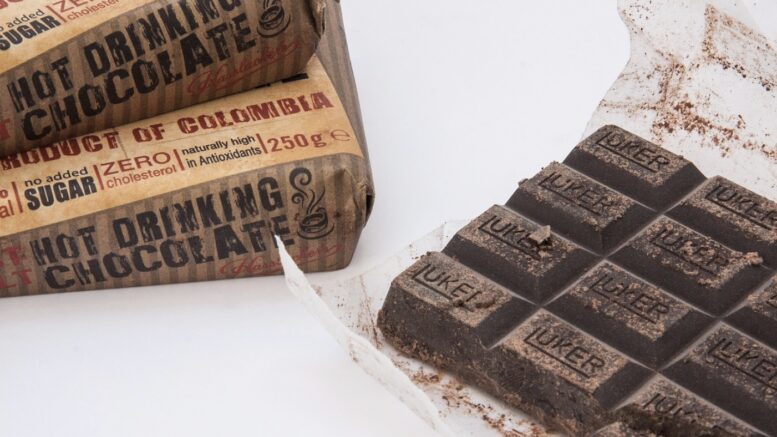In today’s ever-evolving world, where the journey of food products covers great distances from their origin to our tables, assuring the safety and excellence of our consumption has emerged as a matter of utmost importance. Many factors influence food safety, one aspect often overlooked yet carrying significant influence is packaging. Packaging is more than aesthetics and convenience; it assumes the role of a shield, diligently keeping the food and shielding it against pollutants, spoilage, and various hazards.
Prevention of Contamination
The primary objective of food packaging is to shield edibles from external agents, including bacteria, viruses and dust. The packaging materials used are designed to create a barrier that prevents the entry of these contaminants and maintains the integrity of the food. Packaging helps in preserving the freshness and quality of the food by reducing exposure to moisture and light, which can accelerate spoilage. By acting as an effective barrier, packaging materials like plastics effectively prevent the transfer of contaminants, significantly reducing the risk of food borne illnesses.
Provision of Physical Protection
Packaging assumes a pivotal role as the first line of defense, providing vital physical protection to food commodities. Functioning as an impermeable shield, it ensures their impenetrability against external influences such as impacts, temperature changes, and physical damage throughout their journey including transportation, warehousing, and shelving.
Regardless of whether it takes the form of a carton, a bottle, a canister, or a pouch, packaging constituents are carefully engineered to withstand the rigorous demands of the supply chain while effectively safeguarding the contents within. By effectively eliminating the effects of moisture, air, light, and microorganisms, packaging stands as a vital shield, diligently conserving the essence of freshness, flavor, and nutritional potency. A robust defense against damage, it effectively obstructs the penetration of hazardous substances that pose a danger to food safety.
Preservation of Freshness
The freshness of food plays a pivotal role in determining its quality and safety. Companies like TDI Packsys offer packaging materials equipped with properties like moisture resistance, oxygen barriers, and light-blocking capabilities to aid in preserving the freshness of perishable food items. These properties prevent moisture loss, delay oxidation, and shield the food from harmful UV rays, extending the product’s shelf life and preserving its nutritional value.
Temperature Regulation
Certain food products require specific temperature conditions to remain safe and suitable for consumption. Packaging plays a vital role in temperature control by providing insulation and ensuring the maintenance of the desired temperature range. It aids in preserving the quality of frozen foods, keeping hot foods warm, and ensuring that temperature-sensitive products, such as dairy and meats, remain within safe limits throughout the supply chain.
Tamper-Proof Packaging
Tamper-proof packaging is an essential aspect of food safety, particularly for packaged foods and beverages. It incorporates visible signs of tampering, allowing consumers to identify if the product has been compromised. Tamper-proof packaging, including seals, bands, or breakable caps, fosters consumer trust and acts as a deterrent against potential tampering, ensuring the integrity and safety of the food.
Allergen Control
The prevalence of food allergies and intolerances has been steadily increasing, making allergen control a significant concern. Packaging plays a crucial role in preventing contamination between different food products. By segregating allergenic and non allergenic foods and clearly labeling the presence of allergens, packaging aids consumers in making informed choices, reducing the risk of allergic reactions.

Information and Labeling
Packaging serves as a medium for providing essential information and labeling pertaining to the food product. Accurate and clear labeling of ingredients, nutritional information, allergens, best before dates, and storage instructions empowers consumers to make informed decisions regarding the safety and suitability of the food. Proper packaging ensures easy accessibility to this information, mitigating the risk of improper handling or consumption.
Convenience and Portability
Packaging not only ensures food safety but also enhances convenience and portability. Ready-to-eat meals, individually packaged snacks, and single-serve beverages offer consumers quick and easy options. Well-designed packaging featuring resealability, portion control, and easy opening mechanisms ensures that consumers can conveniently access and consume food while preserving its safety and freshness.
Prolonged Shelf Life
Appropriate packaging of food products aids in extending their shelf life, reducing food waste and promoting sustainability. Packaging materials equipped with barrier properties hinder the entry of oxygen, moisture, and light, which are major contributing factors to food spoilage. By slowing down the degradation process, packaging allows for longer storage and distribution periods, reducing the likelihood of food reaching its expiry date before consumption.
Compliance with Regulations
Food packaging must comply with various regulations and standards established by regulatory authorities to ensure food safety. These regulations encompass guidelines on packaging materials, labeling requirements, and manufacturing practices. Adhering to these regulations is crucial in maintaining the safety and quality of food products while demonstrating the commitment of manufacturers and suppliers to consumer protection.
Improves Shelf-Life

One of the key reasons behind the importance of packaging in maintaining food safety lies in its capacity to enhance the durability of goods. Efficient packaging methods and materials establish a safeguarding barrier that shields food items against external factors like air, moisture, light, and microorganisms, which can cause spoilage and bacterial proliferation. By limiting exposure to these elements, packaging assists in preserving the freshness, taste, and nutritional content of food for an extended duration.
Whether it involves hermetic containers, vacuum-sealed packets, or altered atmospheric packaging, appropriate packaging options substantially lengthen the lifespan of perishable items, diminishing the risk of foodborne diseases and minimizing food wastage. Durability empowers consumers with a sense of assurance regarding the safety and quality of their purchased food, while businesses can optimize their stock management and mitigate financial losses attributed to spoiled merchandise.
Endnote
Packaging plays a crucial role in ensuring food safety across the entire supply chain. From contamination prevention and physical protection to freshness preservation and temperature regulation, appropriate packaging safeguards the quality and integrity of food products. Recognizing the significance of packaging in food safety enables consumers to make informed choices and enjoy safe and wholesome food. Manufacturers and regulatory bodies must continue to prioritize packaging standards and innovation to address evolving food safety challenges and meet consumer expectations.
